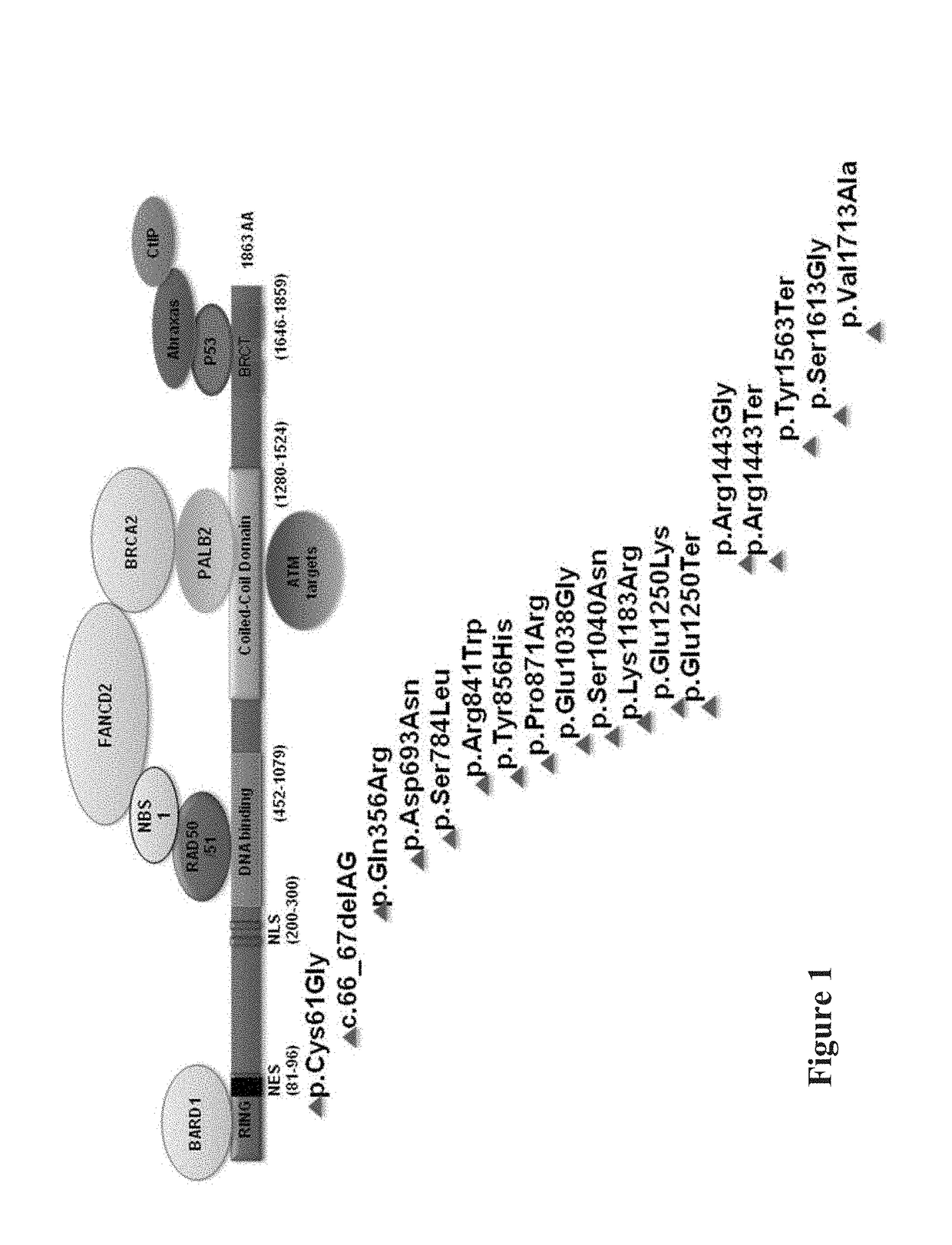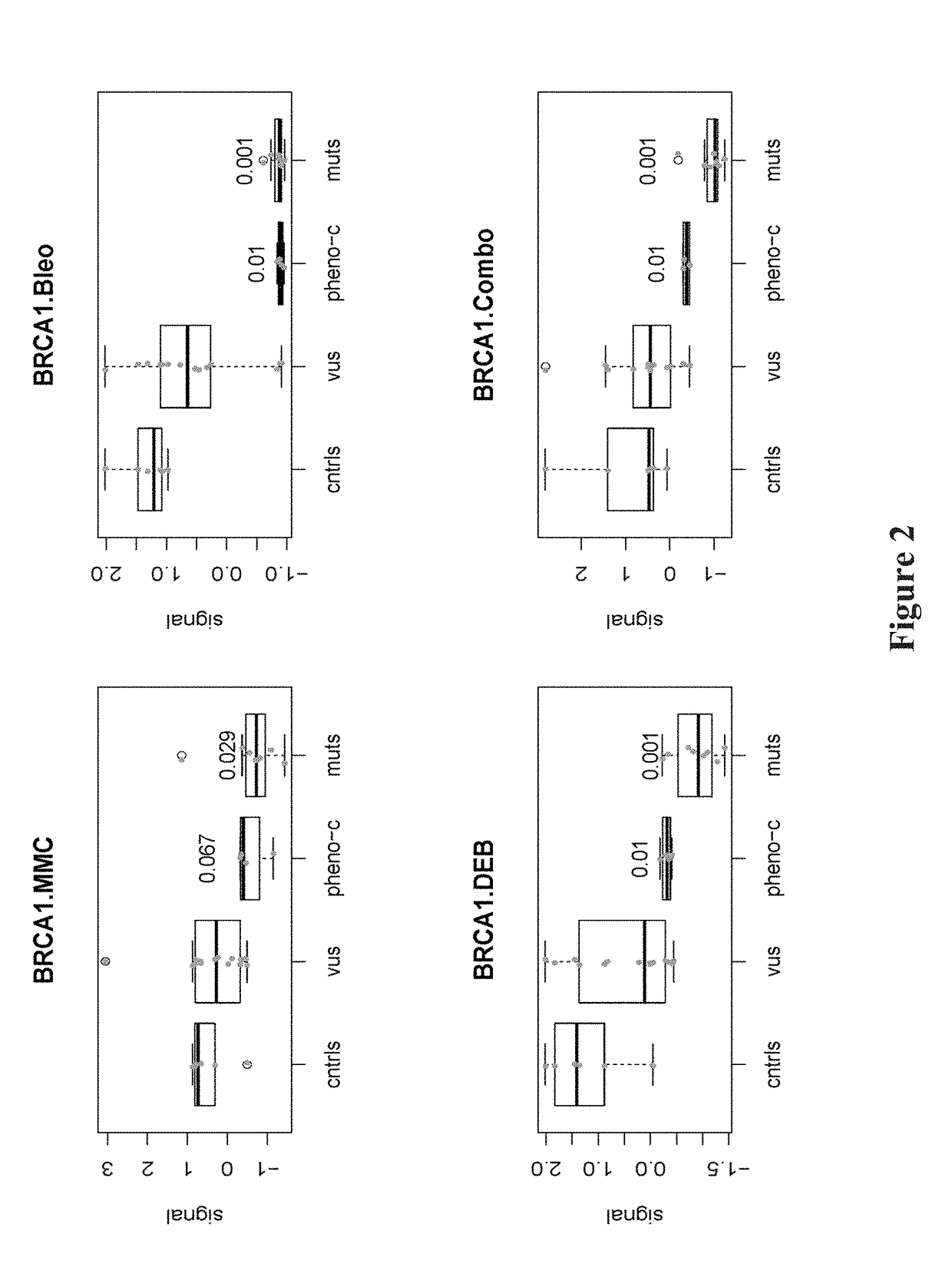Methods and compositions for assessing germline risk of cancer
a germline risk and composition technology, applied in the field of methods and compositions for assessing germline risk of cancer, can solve the problems of increasing the risk of breast and ovarian cancer, and affecting the quality of annotated variants identified in these genes, so as to achieve the effect of minimal equipment and workflow changes
- Summary
- Abstract
- Description
- Claims
- Application Information
AI Technical Summary
Benefits of technology
Problems solved by technology
Method used
Image
Examples
example 1
ell Western and Nuclear Localization Assay
[0030]This Example describes exemplary protocols and reagents used for digital cell Western and nuclear localization assay.
[0031]A. Fix Cells—Adherent Cells Protocol:[0032]1. Trypsinize adherent cells prior to fixation and collect the culture in a 50 ml Falcon tubes.[0033]2. Vortex, count cells (20 uL Trypan Blue+20 ul cell culture in a tube, then put 10 ul of the mix on Countess cell counting chamber slide) and record.[0034]3. Centrifuge to remove media-trypsin mix and resuspend the cells with 500 ul culture media. If there is a larger pellet, add more media.[0035]4. Mix the cells by pipetting to avoid any clumping before fixation or it will fix aggregated cells as one.[0036]5. Add ⅕th or 100 ul of ‘Inhibitor Mix Cocktail’ in to the cells.[0037]6. Mix by vortex briefly and incubate at 37° C. with 5% CO2 for 10 minutes.[0038]7. If a larger volume of fixation media is used, centrifuge the cells to pellet and remove all media from the falcon t...
example 2
[0113]This Example describes three different types of analyses performed to evaluate the effects of different genetic variants: 1. protein co-immunoprecipitation to assess co-factor binding to BRCA1, 2. digital cell Western to assess total and phospho-p53, and 3. nuclear localization in the presence or absence of DNA clastogenic or cross-linking agents.
[0114]The present invention is not limited to the above specific examples. Another exemplary protocol contemplated by the present invention is characterized by recovering magnetic beads complexes from the sample by applying a magnetic field; recovering non-magnetic bead complexes from the sample based on a non-magnetic physical property of the non-magnetic beads; passing the recovered magnetic bead complexes through a flow cytometer or optical plate reader; passing the recovered non-magnetic bead complexes through a flow cytometer or optical plate reader; detecting the optical signal(s) of the recovered magnetic bead complexes; and de...
PUM
| Property | Measurement | Unit |
|---|---|---|
| pH | aaaaa | aaaaa |
| volume | aaaaa | aaaaa |
| volume | aaaaa | aaaaa |
Abstract
Description
Claims
Application Information
 Login to View More
Login to View More - R&D
- Intellectual Property
- Life Sciences
- Materials
- Tech Scout
- Unparalleled Data Quality
- Higher Quality Content
- 60% Fewer Hallucinations
Browse by: Latest US Patents, China's latest patents, Technical Efficacy Thesaurus, Application Domain, Technology Topic, Popular Technical Reports.
© 2025 PatSnap. All rights reserved.Legal|Privacy policy|Modern Slavery Act Transparency Statement|Sitemap|About US| Contact US: help@patsnap.com



